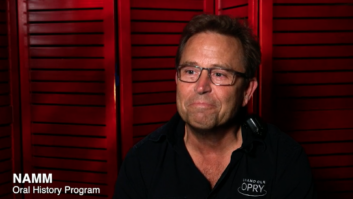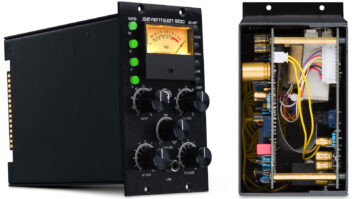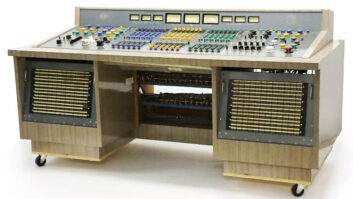Founded by the late Bill Putnam in the attic of Universal Recording in Chicago, Universal Audio later moved into the attic of United Recording in Hollywood (which later became Ocean Way). One of UA’s early products was the 108 tube microphone preamp that was used in both the Chicago and L.A. studios’ consoles. This amplifier formed the basis for the tube UA 175/176 compressor and is thus the forefather of the Universal Audio 1176 Peak Limiter.
The original 1176 emerged in 1966 after Putnam had successfully designed and built a remotely controlled amplifier around the newly invented Field Effect Transistor (FET) and his successor to the 108 amplifier, the transistorized 1108 mic preamplifier. For minimal distortion, FETs require careful circuit design so that they operate within their narrow linear range. In the case of the 1176, the FET is used as a voltage variable resistor in the bottom leg of a voltage divider. The resistance between the Drain and Source leads of the FET will change in response to voltage applied to the Gate lead. The FET shunts more and more audio signal to ground as compression is increased. This is in sharp contrast to the UA 175/176s variable-Mu design in which the actual voltage gain of an amplifier is changed.
The FET gain reduction stage is followed by the 1108 amplifier, which consists of a Darlington pair of transistors as a preamp stage and a Class-A line output amplifier that incorporates a special matching transformer to drive 600-ohm line impedances. The 1176 is a feedback-style compressor, as the signal level is sensed after gain reduction and used as a constant reference to improve stability. Feedback is used in each of the amplifier stages, and in order to reproduce the original 1176 faithfully, Universal Audio had to replicate the original integral output transformer, complete with the additional windings that provided a feedback signal to the final line output amplifier circuit. Putnam specified this transformer specially for the 1176 and his son, Bill Putnam Jr., was fortunate to find extensive design notes that enabled him to re-create and further improve the original design.
The extremely rare Rev A (first produced on June 20, 1967) with serial numbers 101-125 is the original 1176 design and features a silver brushed-aluminum face and blue stripe. It has a 600-ohm input transformer made by Peerless that was later replaced with a UTC unit. The signal preamp after the gain reduction FET uses a FET followed by a bipolar transistor amplifier circuit and the Output level control. The Output level control feeds essentially the same circuit again, but follows it with a 2N3053 transistor line amp operating in Class A. The original UA-5002 output transformer has a split secondary, a tertiary winding for negative feedback and a separate emitter winding. This transformer was revised in following units to the improved UA-5002A and is the same transformer that is used in the 1176LN reissue.
Rev AB (November 20, 1967, serial numbers 125-216) features several changed resistor values in the signal preamp stages, which improve stability as well as noise. Also added are bypass capacitors around the resistor feeding the gain-reduction FET.
Rev B (November 1967 to January 1970, serial numbers 217-1078) includes an all bipolar design to replace the FET-based circuit in the signal preamp section. A tap off the emitter of the first transistor of this stage provides feedback back to the FET gain reduction stage.
Rev C (January 9, 1970, serial numbers 1079-1238) introduces the first of the black-face models and the LN suffix, which stands for low noise. An additional circuit designed by Brad Plunkett (and epoxy-encapsulated to keep it secret, pending a patent filing) reduces the drain-to-source voltage on the gain-reduction FET to keep it within its linear range designation. The LN circuit epoxied module and the Q-bias pot are soldered and mounted directly onto a Rev B circuit board.
Rev D (into 1973, serial numbers 1239-2331) has no circuit changes but features a redesigned main printed circuit board incorporating the LN circuitry and Q-bias pot.
Rev E (up to March 15, 1973, serial numbers 2332-2611) adds a power transformer that can be switched between 110V and 220V mains operation.
Rev F (March 15, 1973, onward, serial numbers 2611-7052) changes the output amplifier from the original Class-A design to a push-pull configuration (based on the 1109 preamp) that provides more output drive. Also, the metering circuit uses an op amp that simplifies meter calibration and final testing.
Rev G (production dates unknown, serial numbers 7053-7651) replaces the input transformer with a differential amplifier. (Op amps lowered manufacturing costs and were very popular solutions for audio manufacturers at the time.)
Rev H (production dates unknown, serial numbers 7652 and above) changes the front panel to silver.







